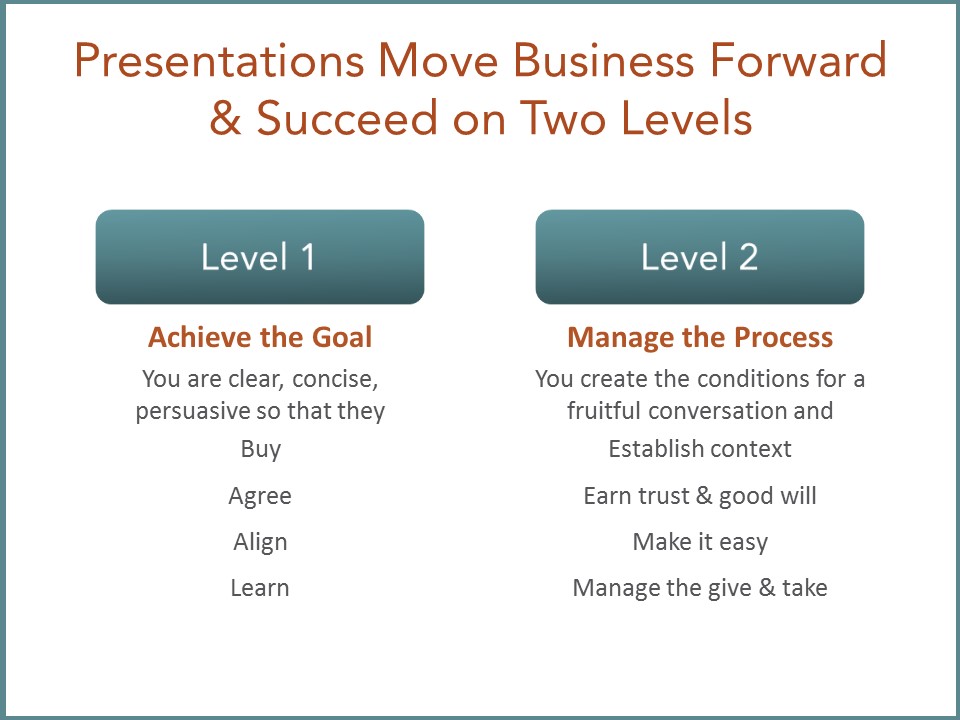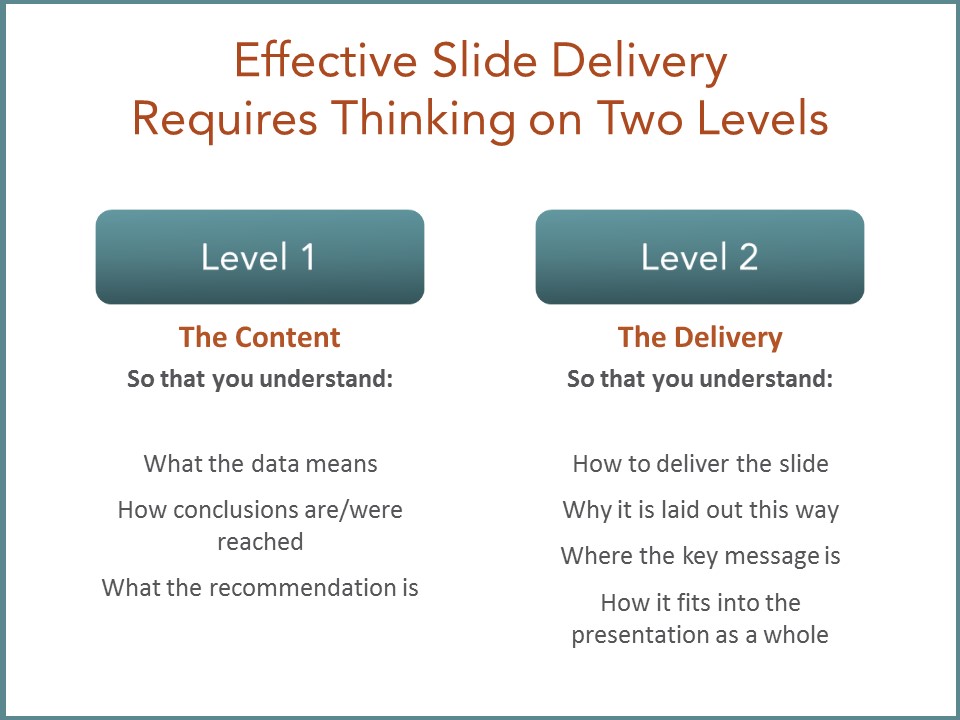
- Barbara Egel Presentations
Sometimes in workshops, we discover that our learners are working with slides or whole decks they didn’t create, and some of these slides are not only unnatural to deliver but also confusing in their layout, organization, or even in the information they include. If you’re confused by a slide, your audience is not going to get much from it either.
How, then, do you get past both the informational confusion and the delivery challenges to make that slide as natural a part of your deck as the slides you made yourself?
We have a few suggestions. We talk about The Orderly Conversation succeeding on two levels: the business goal (make the sale, get buy-in, teach the process, etc.) and the process goal (earn trust, make it easy, manage the conversation).
Similarly, we can talk about slide delivery working on two levels.
- The first is the obvious content goal: understanding the data, knowing how conclusions were reached, believing in recommendations.
- The second is the design and delivery goal: understanding why a slide is laid out the way it is, what key message it’s intended to communicate, and how it fits within the larger goals of the presentation as a whole.
Sitting at your desk, you can usually figure out the first goal, and if it comes from higher up in the company, you trust the data to be reliable and true. However, your ability to deliver the slide depends on your understanding of the second goal. How did the person who created the slide intend for it to be delivered? Were they even thinking in terms of intent?
If you can, try to talk with that person. To really understand their slides, ask the following questions.
- “Help me understand what the intended takeaway is for this slide. What should the audience learn or believe after it’s delivered?”
- “How does this presentation of the data support that takeaway?”
- If the slide has more on it than you think is needed to make its point, “How did you intend for this [graph/chart/text box] to feed into the point you’re making?”
- “How does this slide fit with the one before it and the one that comes after it?”
- “How can we rewrite slide titles to clarify the main point of this slide in the context of the deck?”
- Finally, if they do not understand your questions, or if you are still unclear, “Could you run through this slide (or a couple of slides) as if you were delivering it to my intended audience?”
This should help you understand the slide design and how it fits with the goals of the presentation overall. It’s also possible that your questions could lead to a reconsideration and even a redesign of the slides in order to help you—and your audience—get the most out of them.



